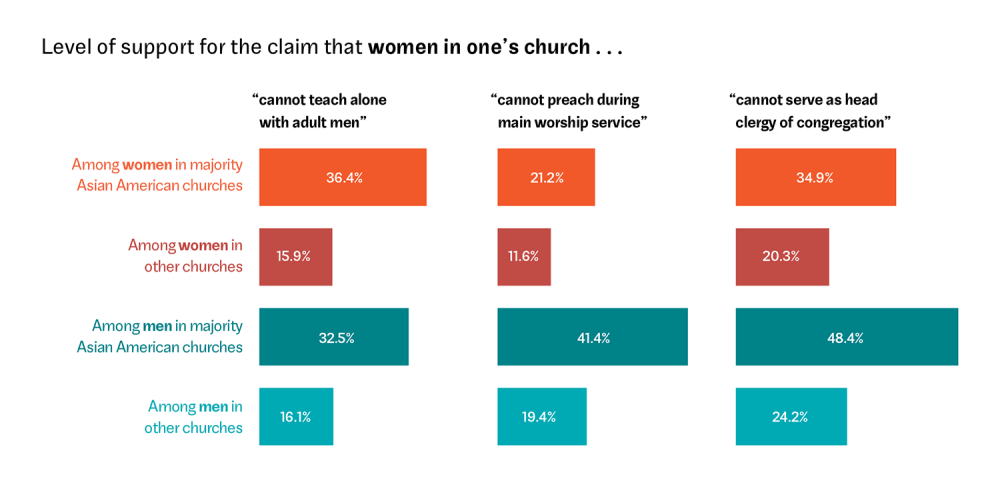Fewer chances for women to preach and pastor at Asian American churches, new survey shows

Data source: Innovative Space for Asian American Christianity
Women have fewer high-level leadership opportunities in Asian American churches than in other churches, according to a survey from the Innovative Space for Asian American Christianity. The survey also found that men and women in Asian American churches disagree as to why women are missing in upper leadership. Men most frequently cited “biblical and confessional beliefs” while women most often cited “overrepresentation of men” and “work-life balance.”
The pilot study, called the National Survey of Asian American Congregational Leadership Practices, sampled nearly 350 English-speaking congregations between 2022 and 2024. More than 60 percent of churches in the sample were predominantly Asian American. Twenty-eight percent of the Asian American churches sampled were from mainline Protestant traditions.
An accurate total of Asian American congregations is unknown, especially after the pandemic forced closure of some churches, said ISAAC executive director Young Lee Hertig. ISAAC’s research team, funded by the Lilly Endowment, drew from a database they assembled of more than 6,000 Asian American congregations to recruit survey respondents.




